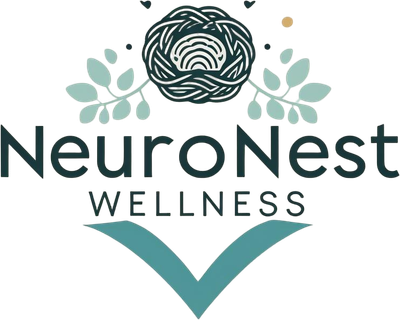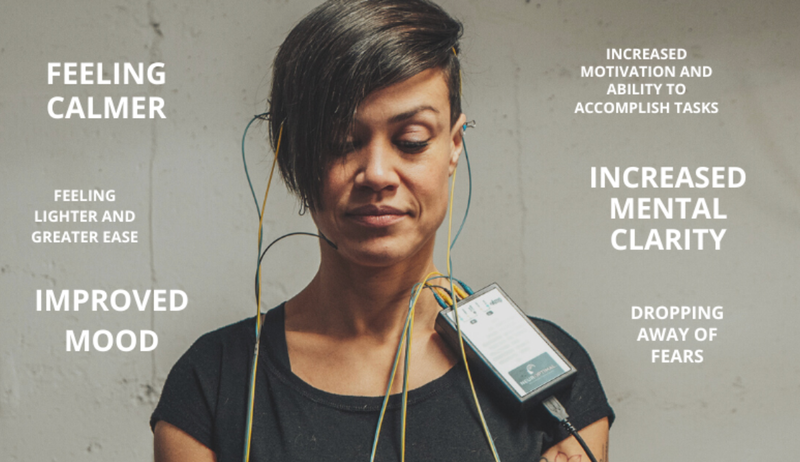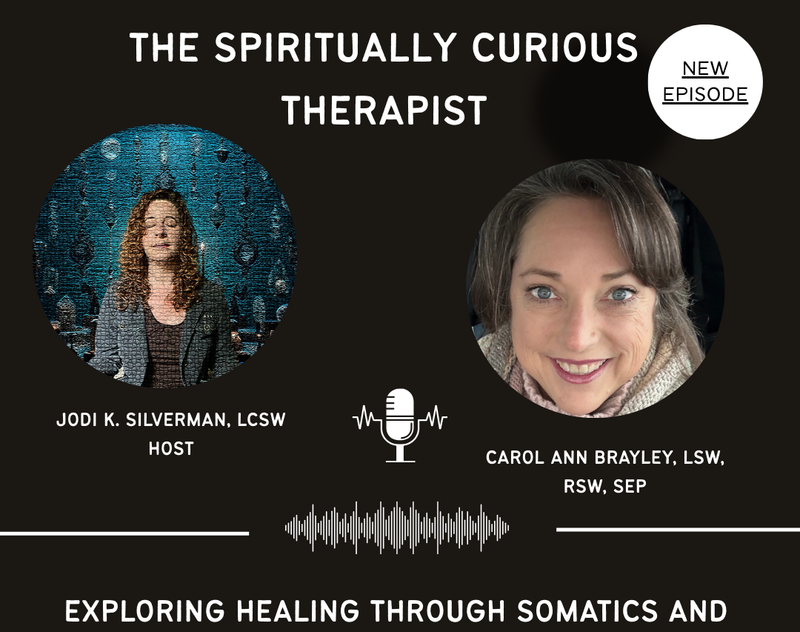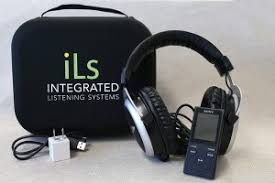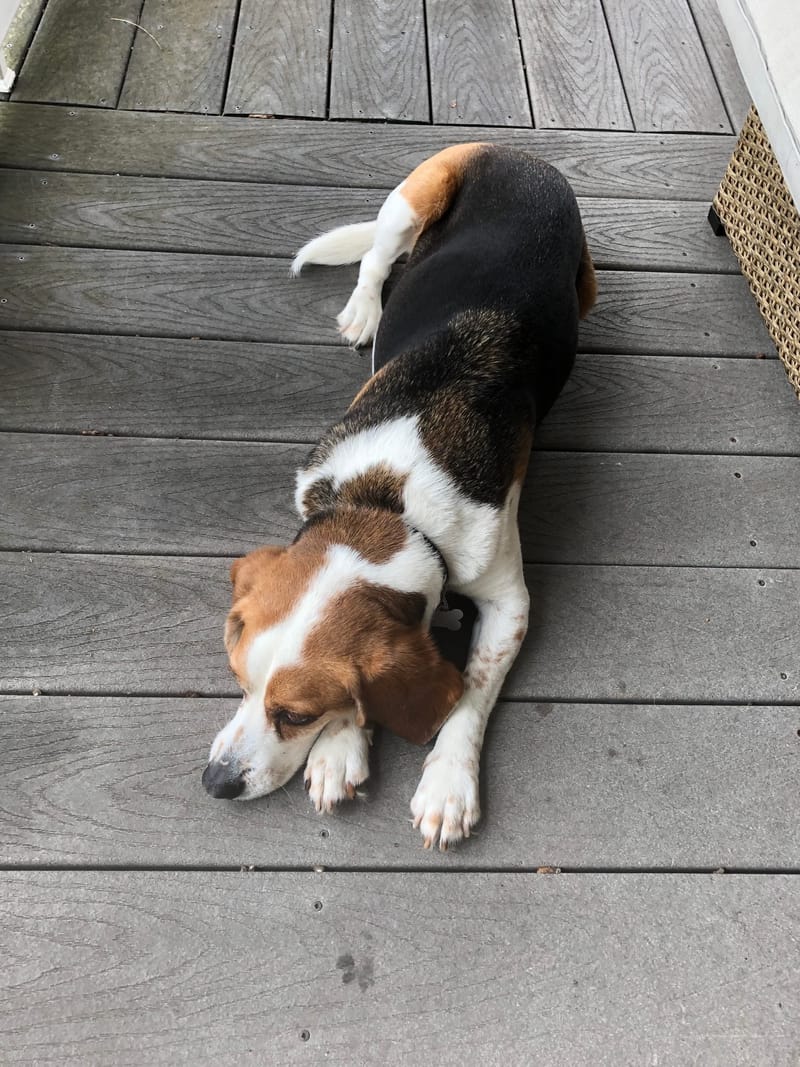Helping complex and sensitive brains feel more at home — in the world and in themselves.
Brain training and gentle nervous system care for neurodivergent families, trauma, anxiety, depression, addiction, and post-concussion support.
About Me
I bring together lived experience, clinical expertise, and deep nervous system wisdom to offer gentle, effective support through NeurOptimal and more. Whether you’re navigating anxiety, trauma, brain injury, neurodivergence—or simply seeking more calm—you’ll be in experienced, compassionate hands here.

I’ve worked as a clinical social worker for over 30 years, specializing in nervous system regulation and trauma healing. Along the way, I’ve trained in a range of approaches—including NeurOptimal® Neurofeedback, Somatic Experiencing, EMDR, and Brainspotting. I also offer the Safe & Sound Protocol (SSP), Rest & Restore Protocol (RRP) and iLs Focus, though NeurOptimal is at the heart of this site - and one of my favorite ways to support people from the comfort of home.
People seek out NeurOptimal for all kinds of reasons—chronic anxiety, emotional overwhelm, post-concussion symptoms, sleep struggles, trauma recovery, ADHD, autism related concerns, and more. What makes my practice unique is that I’ve lived many of those experiences myself. I’m neurodivergent, have a history of complex trauma, and have personal experience with brain injury and post-concussion syndrome. I understand the toll these challenges can take—and I also know how powerful it is when something finally begins to help.
Although NeurOptimal is designed to be incredibly gentle, it’s important to know that a small number of people - especially those with more sensitive or complex nervous systems - can experience temporary discomfort or dysregulation early on. That’s where working with me makes a big difference.
Unlike most NeurOptimal rental providers, I don’t just ship you a system and wish you luck. I have an extensive clinical background and am internationally recognized as a nervous system specialist. That means I know how to spot when things need a slight adjustment - and I can offer grounded, compassionate guidance to help you (or your child) move through any challenges gently and efficiently.
That’s why I created NeuroNest Wellness: to offer calm, accessible, high-quality support to individuals and families - especially those who’ve tried everything else and still haven’t found something that feels like a fit. Whether you’re here for NeurOptimal rentals or curious about other options I offer, I’m so glad you found your way here.
When accessing NeurOptimal through me, you’re not just renting a system - you’re receiving care and expertise from someone who truly understands how sensitive, brilliant, and complex the nervous system can be. My approach is personalized, intuitive, and grounded in years of experience walking alongside people as they rediscover ease, clarity, and resilience.
Neurofeedback
Simple, gentle, and powerful. NeurOptimal helps your brain do what it does best - adjust, restore, and thrive - while you rest, relax, or even scroll your phone. Support for all ages and all kinds of brains.
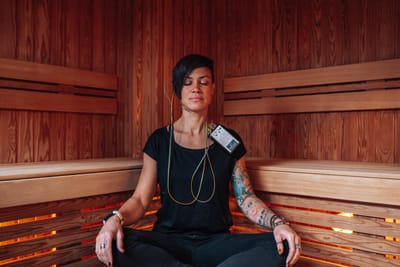
Gentle brain training to help you feel more like yourself - naturally.
If you’re navigating anxiety, overwhelm, tic disorders, burnout, brain fog, concussion symptoms, trauma, or sensory sensitivities—or if your child is—you’re not alone. And you don’t have to “push through” or “figure it out” on your own.
NeurOptimal® is a non-invasive, intuitive form of neurofeedback that helps the brain become more flexible, calm, and resilient—without needing any diagnosis, brain mapping, or complicated protocols. It’s safe, easy, and designed to meet your system exactly where it is.
Unlike other forms of neurofeedback, NeurOptimal doesn’t “train” your brain to behave in a certain way. Nothing is being done to your brain—your brain is simply receiving real-time feedback about its own activity, which helps it naturally reorganize and regulate itself in the way it knows how.
🌿 So, how does it work?
During a session, five small sensors are gently placed on your scalp and ears. You’ll listen to music—or a children’s show if that’s more your speed—through a tablet. As the system monitors brain activity, it delivers subtle interruptions (like a brief pause or “skip” in the sound) when it detects a shift in your brain’s patterns. That moment of feedback creates a kind of mirror for the brain.
Imagine doing yoga for years without ever seeing yourself in a mirror—and then one day, suddenly having one appear. You might notice your downward dog’s a little off. That awareness alone helps you begin to adjust.
That’s what NeurOptimal does: it helps the brain see itself, so it can choose to function more smoothly.
And because your brain is always in charge, it will never push itself faster than it’s ready to go. That’s why side effects are extremely rare—and why this system is even used with people in comas, or with sleeping children who wouldn’t tolerate traditional neurofeedback.
💫 Real-life impact
NeurOptimal is like a gym for your brain. As your brain begins to regulate itself more efficiently, improvements may be noticed in areas like:
• Sleep
• Mood and emotional regulation
• Focus and executive functioning
• Sensory sensitivity
• Cognitive clarity and memory
• Energy levels and motivation
• Headaches, including migraines
• Digestion, immune function, and more
You can do whatever you like during a session—nap, read, scroll on your phone, answer emails, or just rest.
Many parents find that homework time becomes easier, meltdowns decrease, and family life begins to feel more connected and harmonious. (And yes, I often recommend parents do sessions too—brains “synch up,” and the whole home benefits.)
✨ Why work with me?
There are many people offering NeurOptimal rentals—but most don’t have a clinical background, and even fewer have deep specialization in nervous system regulation.
I’ve worked as a clinical social worker for over 30 years, supporting sensitive and complex individuals and families. I’m also neurodivergent myself and have personal experience with ADHD, fibromyalgia, chronic insomnia, trauma, anxiety, sound sensitivities, MTHFR, and brain injury/post-concussion syndrome. In my family there is also tic disorders, autism, selective mutism, Ehler Danlos syndrome and more. This work isn’t just professional for me—it’s personal. I know what it’s like to need something that’s truly gentle.
In many cases, NeurOpitmal with me is covered under extended health plans that cover social workers in Ontario. I also have discounts available. Please enquire for details.
If any challenges arise during your use of the system, I can offer nervous system based simple, effective strategies to help you get back on track—quickly and gently.
NeurOptimal Pricing
Those accessing NeurOptimal with me who have extended health plans that cover social workers in Ontario, may be reimbursed for their sessions, within the limits of their plan.
In person sessions, when available are $180 each.
NeurOptimal Rental System Packages
Discounts are often available, please enquire for details. Free local delivery is often possible (Brantford, Paris, Hamilton, Cambridge, Kitchener, Burlington and surrounding area). Shipping available across Canada at an additional charge.
Unlimited sessions, over 2 weeks.....$650
Unlimited sessions, over 4 weeks.....$1000
After renting for 4 weeks additional 4 week periods can be added on for $800
The systems are very easy to use and come with everything you need - conductive paste, manual, etc... Support and advice via email is also included.
Feel free to share your sessions with family members. If a child is doing brain training it is ideal if at least one parent is also having sessions.
When people do brain training together they tend to "synch up" better and feel more connected. As we begin to improve we are able to support the improvements of others.
If you choose to purchase a NeurOptimal system after renting, I’ll rebate up to $150 of your rental fee. Be sure to ask me how to access this before purchasing.
Click here to watch videos about NeurOptimal
If you'd like to check discount and delivery options, check system availability, or reserve a system, please contact me.
Other Tech Solutions
Not sure where to start? I am happy to help you choose the approach — whether SSP, RRP, iLs, or NeurOptimal® — that best fits your system. Some tools work beautifully on their own, while others may offer deeper benefit when layered gently over time. Together, we’ll find the right fit for you.
Safe & Sound Protocol (SSP)
Developed by Dr. Stephen Porges, SSP is a gentle, music-based program that helps calm the nervous system and create a deeper sense of safety. Especially helpful for those who feel stuck in fight, flight, or freeze, it can support emotional regulation, connection, and resilience. I offers SSP internationally with advanced specialization in highly sensitive and complex individuals. When done before neurofeedback, SSP may help the brain respond more effectively and efficiently. SSP is for all ages!
Learn MoreiLs Focus System
The iLs Focus Program combines music, movement, and activities to support brain and body integration. It’s great for all kinds of neurological concerns—including trauma, anxiety, sensory challenges, learning differences, and developmental delays. Suitable for children and adults, iLs is done at home and is especially helpful for supporting regulation, emotional resilience, and overall functioning.
Learn MoreRest & Restore Protocol (RRP)
Created by Dr. Stephen Porges, founder of Polyvagal Theory, RRP is a calming, music-based program that gently supports your nervous system in shifting toward rest, repair, and balance. Many people find it helps with sleep, digestion, and overall ease—especially during times of stress, burnout, or chronic tension. It’s a simple, soothing way to feel more grounded and regulated.
Learn MoreTherapy
This is therapy that goes far beyond talk. I blend somatic work, Brainspotting, parts work, and more to help deeply held patterns shift - often where nothing else has worked. Grounded in nervous system wisdom and guided by intuition, real change becomes possible.
Whole-person support for healing, growth, and nervous system regulation.
Curious why this approach is so different from traditional talk therapy? Working directly with the nervous system is not only far more effective - it’s often more enjoyable, gentle, and ultimately more cost-effective, because the shifts tend to come faster and last longer. Read more about how it works
Therapy with me isn’t one-size-fits-all. I draw from a wide range of evidence-based and body-based approaches to help you move toward more clarity, capacity, and connection - at a pace that feels right for you.
Whether you’re navigating trauma, anxiety, neurodivergence, grief, burnout, or a period of growth and expansion, our work together will be collaborative, attuned, and grounded in your lived experience.
I work with adults (18 and up) who are ready to explore healing from a deeper, nervous-system-informed perspective. That might mean starting with emotional regulation or stress, or it might mean diving into identity, attachment, parts work, or intergenerational trauma or other areas that you are ready to shift.
🧠 Modalities We Can Explore Together:
Sessions with me are deeply customized and may draw from a blend of:
• Somatic Experiencing (SE)
• Brainspotting
• EMDR
• Parts Work (including IFS-informed and ego-state work)
• ACT (Acceptance & Commitment Therapy)
• Mindfulness-based and body-based approaches
• Polyvagal Theory-informed care
When appropriate, I may also weave in Safe & Sound Protocol (SSP) or the Rest & Restore Protocol (RRP) as part of your overall therapeutic process. For clients working with me regularly and consistently, these modalities can sometimes be added at no additional cost as part of our ongoing work.
🌿 What therapy looks like with me:
• Sessions are online - but not distant. Just because we’re meeting virtually doesn’t mean I’m not fully present. I’ll be right there with you - attuned, grounded, and deeply engaged in your process. Many clients are surprised by how intimate and connected online sessions can feel.
• We go at your pace. I meet you where you are, whether you’re in crisis, in transition, or simply feeling curious about what more is possible.
• We listen to your body. Nervous system cues matter. I’ll help you learn to recognize what safety and dysregulation feel like in your body—and what your system needs to return to balance.
• We work collaboratively - with room for intuition. You’re the expert on your own experience. I bring not only decades of clinical training but also deep intuitive insight into what may be unfolding beneath the surface. I often sense what’s ready to shift or where we’re being gently invited to explore next.
• We hold the big picture. This isn’t just about symptom relief—it’s about creating the conditions for long-term change, grounded safety, and greater freedom in your body, mind, and life.
🪶 Therapy with me is for you if:
• You’re neurodivergent and want support from someone who gets it
• You’ve done talk therapy but want something deeper or more body-aware
• You feel stuck in trauma patterns or emotional reactivity
• You’ve experienced dissociation, shutdown, or burnout
• You want to explore your identity, inner parts, or beliefs in a safe space
• You’re healing from medical trauma, grief, chronic stress, or a high-demand life
• Or… things are going okay, but you know something more is possible
🧾 Fees & Coverage
Sessions are offered online and are typically 60 minutes. My fee is $200 per hour.
My services are covered under extended health plans that include registered social workers (MSW, RSW) in Ontario. Please check with your provider.
💬 Ready to get started?
If you’re curious about therapy but unsure where to begin, that’s okay. You don’t have to have it all figured out. Just reach out - we can talk about what you’re looking for, and whether working together feels like the right fit.
If you are already feeling ready to start, please feel free to book yourself in using my online scheduler.

Brainspotting
When words aren’t enough, Brainspotting helps your body release what it’s been holding. Gentle, powerful, and often more effective than EMDR — especially for sensitive, overwhelmed, or neurodivergent nervous systems.
When talk therapy hasn’t been enough — Brainspotting can help access what words alone can’t reach.
Brainspotting is a powerful, brain-body-based therapy that helps uncover and release trauma, anxiety, and emotional blocks that may be held deep in the nervous system. It allows us to go beyond insight, gently accessing the root of what’s been stuck — even when you don’t know exactly what that is.
Developed by Dr. David Grand, Brainspotting is based on the idea that “where you look affects how you feel.” By finding a specific eye position that connects with a relevant spot in the brain, we can bring buried experiences into awareness, supporting the body in releasing them in a way that is both profound and often surprisingly gentle.
How it works
In a Brainspotting session, we follow the cues of your body and nervous system — not a script.
Using a combination of focused attention, somatic attunement, and mindful presence, we locate a “brainspot” connected to the issue we’re working on. This may be something you’re consciously aware of (like anxiety, overwhelm, or a traumatic memory), or something more vague (a feeling of being stuck, disconnected, or on edge for no clear reason).
As we stay with that spot and remain curious together, your nervous system begins to process in the background. There’s no need to re-tell or re-live traumatic events. Your body knows what to do when it feels safe enough to begin.
What Brainspotting can support
Brainspotting can be especially helpful for:
• Complex trauma and developmental trauma
• Anxiety, panic, or chronic dysregulation
• Burnout or compassion fatigue
• Grief and loss
• Physical symptoms with an emotional component (e.g., pain, tension, migraines)
• Feeling stuck despite years of other therapy
• Creative blocks or performance anxiety
• Dissociation or a sense of being disconnected from your body or emotions
Gentle, attuned support — customized to you
I often integrate Brainspotting with other somatic approaches like Somatic Experiencing, SSP, and RRP, depending on your unique needs and nervous system. There’s no one-size-fits-all approach — we’ll follow your body’s wisdom and move at a pace that feels right.
Sessions are online, but don’t let that fool you — this work is deeply attuned and connected.
You don’t have to go it alone. I’ll be right there with you.
Curious if Brainspotting might help?
Whether you’re navigating trauma, anxiety, or just know something needs to shift, Brainspotting may help you find a way forward — even if you’ve tried everything else.
Sessions are $200.
Schedule an intake session or contact me to learn more.
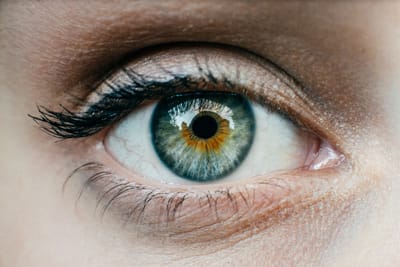
Somatic Experiencing
Somatic Experiencing helps your body release what it’s been holding - gently, safely, and at your pace. Ideal for trauma, anxiety, and chronic overwhelm, especially in sensitive or neurodivergent nervous systems. Sessions are covered under extended health plans that cover social workers in Ontario.
When your nervous system is stuck in survival mode, it takes more than insight to feel better.
Somatic Experiencing® (SE) is a gentle, body-based therapy that helps release stored stress, trauma, and overwhelm — not by analyzing it, but by listening to the body itself.
At NeuroNest, we offer Somatic Experiencing for adults who are ready for real, lasting change. Whether you’re living with anxiety, shutdown, chronic stress, or the weight of past experiences, SE helps your system find its way back to balance - especially when talk therapy hasn’t been enough.
What Is Somatic Experiencing?
Developed by Dr. Peter Levine, Somatic Experiencing is rooted in neuroscience and the body’s natural ability to heal from trauma. When something overwhelming happens, the body often doesn’t get the chance to complete its natural response. That energy gets stuck - and we stay in patterns of fight, flight, freeze, or collapse, long after the event is over.
SE gently helps the nervous system complete those cycles, unwind stuck survival energy, and restore a sense of safety, connection, and calm.
Why SE is So Much Better Than Talk Therapy Alone
Talk therapy can bring insight and understanding - but insight alone doesn’t always shift the deep wiring of the nervous system. SE works at the level where trauma actually lives: in the body, the sensations, and the survival instincts that have been trying to keep you safe. We can incorporate SE together with talk therapy, when desired. For those who don't want to talk about it? With Somatic Experiencing, Brainspotting, NeurOptimal and similar approaches, we can access incredibly deep healing, without ever telling the story.
It’s especially helpful when you:
• Feel stuck, frozen, or shut down
• Have tried therapy but haven’t felt real change
• Struggle with anxiety, chronic stress, or nervous system dysregulation
• Are neurodivergent or highly sensitive and overwhelmed by traditional approaches
• Experience dissociation, tension, or body-based symptoms with no clear medical cause
Layered Support: Somatic Experiencing + NeurOptimal® Neurofeedback
At NeuroNest, Somatic Experiencing can be layered with NeurOptimal® Neurofeedback, offering a powerful, integrative approach to healing.
Many clients begin with NeurOptimal to support regulation, calm the system, and build resilience. As the nervous system becomes more flexible, SE can then help process and release deeper held trauma, stress, or stuck patterns. For others, SE and neurofeedback may be woven together more fluidly. We can incorporate Brainspotting too, to laser in on very specfic concerns.
This combination supports both bottom-up healing (through SE) and real-time brain training (through NeurOptimal®) — ideal for sensitive, neurodivergent, or complex nervous systems that need gentle and effective care.
What Somatic Experiencing Sessions Are Like
SE sessions are deeply attuned, paced to your system, and tailored to what feels safe and right for you. You don’t need to relive trauma or even talk about it. Instead, we follow what your body is already trying to show us - and support your system in gently completing what it couldn’t at the time.
Sessions can include:
• Guided tracking of body sensations
• Support with grounding and regulation
• Gentle exploration of patterns or symptoms
• Integration with NeurOptimal®, SSP, RRP, or Brainspotting when appropriate
• Deep respect for your lived experience, intuition, and needs
Somatic Experiencing Online Sessions
Many clients find it easier to settle and go deeper when working from home - especially those who are neurodivergent or highly sensitive. Despite being virtual, sessions are interactive, intuitive, and fully present.
Ready to Support Your Nervous System in a Whole New Way?
Somatic Experiencing can help you reconnect with your body, calm your system, and begin to feel safe again — gently and without pressure. And when combined with NeurOptimal®, the results can be even more powerful.
Sessions are $200 and available online.
👉 Book an free consultation or contact me to learn more.

Systems FAQ
Your Questions, Answered (Mostly!) This FAQ was written before the Rest & Restore Protocol (RRP) existed—so you won’t find it here just yet. I’m in the process of updating everything to reflect what’s now possible. Thanks for your patience as this page evolves!
Blog
Welcome to the NeuroNest Blog Yes, you can search by topic… but only if you’re willing to play a little game of “find the tag.” Click on any post, scroll to the bottom, and you’ll see clickable topic tags like SSP, neurofeedback, RRP, etc. It’s not ideal - but hey, it works!
NeurOptimal® supports calm, focus, and emotional balance. This effortless, passive brain-training system is available as a convenient home rental across Canada—ideal to use before or after SSP or therapy. Covered under most extended health plans that include social workers in Ontario. Price matching and discounts available.
Read MoreMost therapy helps you cope better. I help you heal the root. By working directly with the nervous system using Brainspotting, Somatic Experiencing, SSP, RRP, and parts work, we gently shift physiology—so problems often resolve naturally, without years of talk. This is therapy that creates real, lasting change.
Read MoreDiscover how nervous system-based therapy can create lasting change. In this podcast, Carol Ann Brayley explains her gentle, intuitive approach using Somatic Experiencing, Brainspotting, and SSP to support healing from trauma, anxiety, burnout, and more.
Read MoreThis article discusses the benefit of doing neurofeedback at home as a cost-effective, convenient way to support nervous system regulation, improve focus, sleep, and emotional well-being—all from the comfort of home.
Read MoreDiscover Carol Ann Brayley’s personal journey with the Rest & Restore Protocol (RRP), a powerful auditory intervention that helped her overcome chronic insomnia, reduce ADHD symptoms, and heal deeply from trauma. A heartfelt story of transformation through nervous system regulation.
Read MoreCurious about the Rest & Restore Protocol (RRP)? In this article, Carol Ann Brayley shares her personal experience and the powerful changes she and her clients have seen using this gentle auditory intervention. From deeper sleep to improved focus and emotional balance, discover how RRP supports true nervous system healing.
Read MoreMany people seek out SSP hoping to address a specific issue like anxiety, misophonia, or chronic pain—but SSP isn’t a treatment for any one condition. This article explains how SSP works by sending cues of safety to the nervous system, often leading to wide-ranging and unexpected improvements.
Read MoreRead the long list of areas that can potentially improve with SSP
Read MoreAn update on Amy and Jasper's latest response to SSP
Read MoreRead how Amy, a 5 month old puppy with anxious aggressive barking and sound sensitivity, is responding to her first round of SSP.
Read MoreWatch as I am being interviewed by the parent of a little boy on the spectrum that I did SSP with. Related topics covered are using SSP with those with trauma, and neurofeedback and the similarities and differences between them.
Read MoreJasper, my rescue dog's response to a second round of SSP. He is no longer afraid of fireworks, thunderstorms, or even loud crashing and banging right at his own home.
Read MoreAppts
This is therapy that goes far beyond talk. I blend somatic work, Brainspotting, parts work, and more to help deeply held patterns shift - often where nothing else has worked. Grounded in nervous system wisdom and guided by intuition, real change becomes possible.

No appointment is needed to access NeurOptimal® Neurofeedback or iLs - just send me an email to inquire about availability and options.
If you’re feeling unsure where to begin, you’re always welcome to email your questions. That’s often the easiest and most sustainable way for me to connect, especially as a neurodivergent introvert.
If you’d prefer to talk things through together, you’re welcome to book a Discovery Call using the scheduler below. It’s a great way to explore whether therapy, SSP, RRP, iLs, Neurofeedback or a combination might be the right starting point.
You can also use the scheduler to book sessions if you’re ready to begin therapy, the Safe and Sound Protocol (SSP), or the Rest & Restore Protocol (RRP).
✨ Please note: the scheduler will say “SSP Yoda”—but yes, it’s still me!
You can access my online scheduler here
Contact
- Brant, ON, Canada
- carolannbrayley@gmail.com
- Mon-Thurs - 10:00am - 5:00pm
Not sure where to start? I’m happy to answer questions by email - it’s the gentlest and most sustainable way for me to connect. If you’d prefer to talk by phone or in an online session, you’re welcome to book a Discovery Call using my scheduler so that we can explore what the best fit may be.
